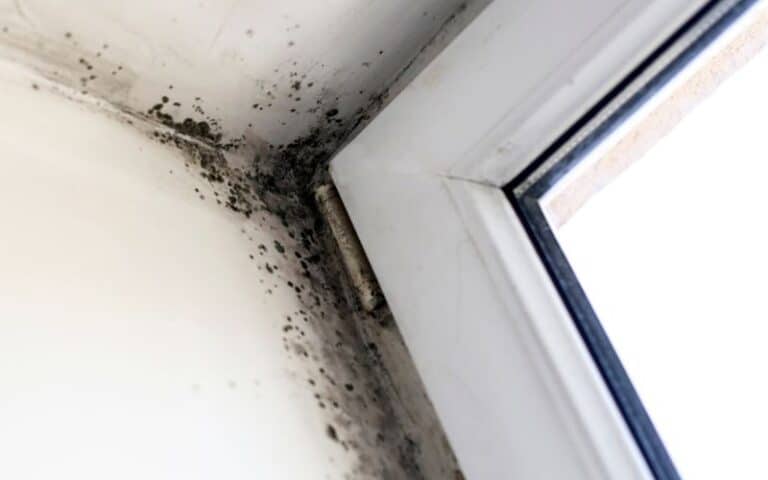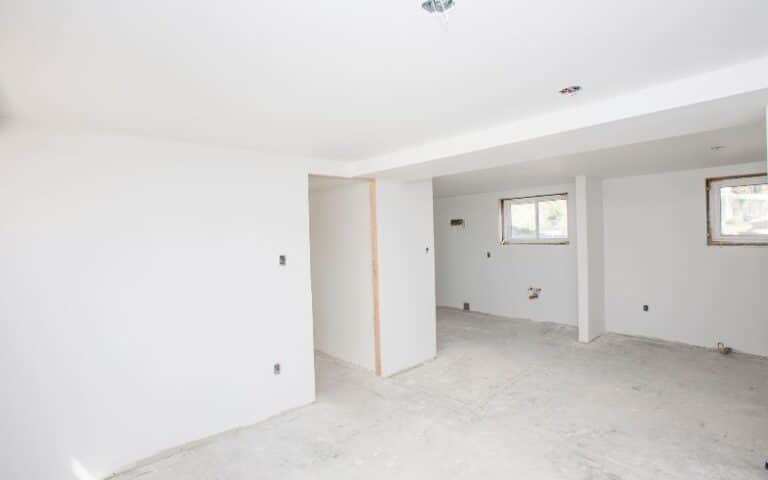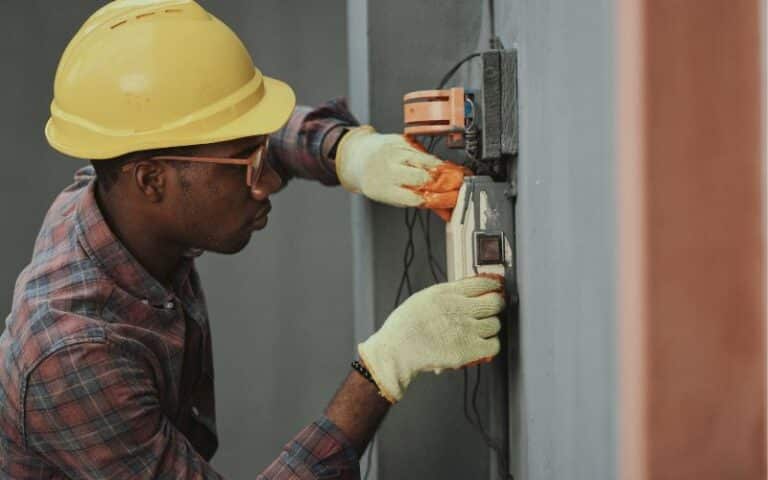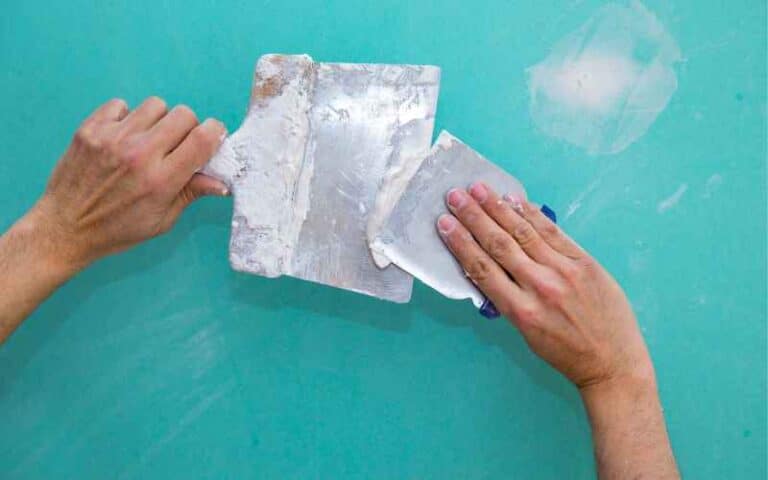Living comfortably after building or renovating your house would be impossible if your ceiling crumbles right before you.
Your ceiling can only crumble when you use the wrong building materials or the wrong quality of the supposed building material.
Drywall, one of your construction materials, can fall off or get dislocated if you don’t follow its procedures attentively.
Yes, you can do only two coats of Drywall Mud, but generally, you need one coat to fill in the seams and three more coats after taping. However, the amount of Drywall Mud you need depends on the mud you’re using, how you want your finish to look, and the time you have.
Before purchasing or ordering any drywall mud, there are things you need to know about drywall mud to be on the safe side.
At the end of this article, you will know the best drywall mud to use and, at the same time, have a good knowledge of other building materials.
Ready for a Drywall Quiz?
How Many Coats Of Mud Should You Put On Drywall?
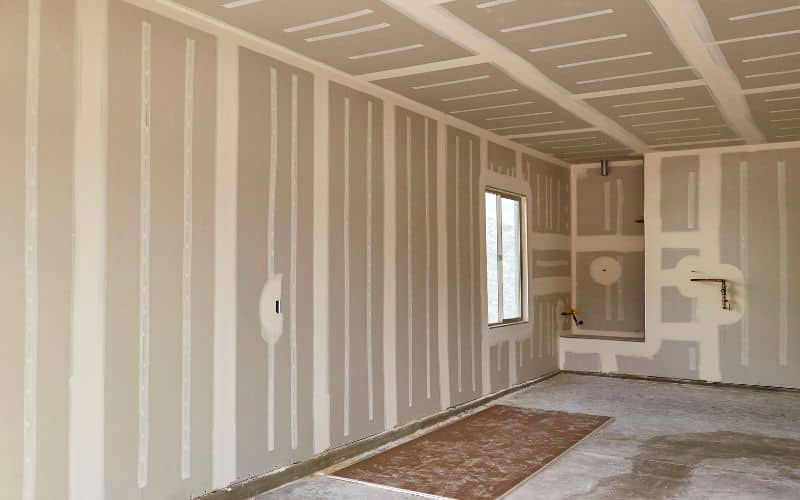
You must apply three or four coats of mud to achieve a smooth finish and a professional look.
Nevertheless, the kind of mud you’re using and how good you want your job to look will determine the number of coats you’ll apply.
If the drywall mud you’re using does not cover the cracks on your wall properly, you will have to add more coats of mud.
Here is a breakdown of the different types of coats you will need:
#1. The First Coat
You can call the first coat the Taping Coat. Builders use the coat to surround the joint tape in the joints between the drywall panel.
You must make it smooth and even, applying a thin layer of mud to the joint tape.
#2. The Second Coat
You can refer to the second as the Bedding Coat. Its job is to cover the joint tape and create a smooth and even surface.
When applying the second coat, make sure it is slightly thicker than the first coat, then apply it in the opposite direction.
#3. The Third Coat
You can call the third coat the Finishing Coat. It should be thicker than the second coat.
The third coat fills out any low spot and creates a smooth and seamless surface.
#4. The Fourth Coat
The fourth coat is optional and not necessarily essential, except otherwise.
The quantity of this coat should be a thin layer of mud to fill in any imperfections and create a perfectly smooth surface. You can also call it the Skim Coat.
The wall’s texture can also influence the number of coats needed. Smooth walls may require fewer coats, while textured walls may need more.
Can You Use 2 Coats Of Mud On Drywall?
You can use two coats of mud on drywall if you’re doing “knockdown.” Knockdown is a drywall finishing style.
Professionals recommend applying at least two coats of mud when finishing drywall. But if you want a smooth wall or ceiling, use three or four coats of mud.
However, some projects may need more than two coats of mud, depending on the drywall installation’s quality, the wall’s texture, and the desired look.
You should apply the first coat after you’ve hung your drywall and fitted it with drywall tape.
Letting your first coat dry completely before applying the second coat will cover the remaining tape and smoothen any unevenness.
If your walls have more significant issues, an additional coat of mud is necessary to avoid cracks.
It is also essential to note that you have to sand each coat properly before proceeding to the next coat.
Two coats of mud are usually sufficient for a standard drywall installation, but the number of coats depends on your desired finish look and the condition of your wall.
How Thick Should Drywall Be When Applying Only Two Coats?
The thickness of drywall when applying only two coats varies rests on various factors.
When working with ½ inch drywall, the total thickness of the drywall after applying two coats of mud will be approximately ¾ inch.
If you’re working with ⅝ inch drywall, after applying two coats of mud, the total thickness will be 1 inch.
The most common drywall thickness is ½ and ⅝ inch for residential and commercial properties, respectively.
For your drywall mud, when applying two coats of mud to ½ inch drywall, the first coat should be ⅛ thick and the second coat slightly thinner, approximately 1/16.
For ⅝ inch drywall, your first coat should be 3/16 inch thick and the second coat ⅛ inch thick, bringing the total thickness to 1 inch.
Note that these thicknesses are general guidelines and can vary based on the desired finishing and the condition of your wall or ceiling.
The table below outlines the differences between the ⅝ Inch Drywall and the ½ Inch Drywall as follows:
| ⅝ Inch Drywall | ½ Inch Drywall |
|---|---|
| A ⅝ inch of drywall is thicker and heavier. | ½ inch drywall is less thick and lightweight. |
| Installation of ⅝ inch drywall is harder and needs additional manpower due to its weight. | ½ inch drywall is lightweight, and installing it will be a lot easier than the ⅝ inch drywall |
| ⅝ inch drywalls are for commercial buildings. | ½ inch drywalls are for interior walls and ceilings in residential construction. |
What Happens When Your Drywall Mud Is Too Thin?
For your drywall to work effectively, it must have the right thickness. If it is too thin, it can cause a range of problems.
First, it is essential to know why your drywall is thin.
The most common reason is if the mixture contains excess water. This can happen if you add too much water to the drywall mud or use a wet tool when applying it.
Drywall mud can also become thin if you don’t cover your drywall mud, causing it to dry out.
One of the obvious problems that can occur when your drywall is too thin is the difficulty when applying it.
Thin mud will not adhere properly to your drywall’s surface, resulting in saggy panels.
Another problem that can occur is that your drywall mud will not dry properly. Thin drywall mud takes longer to dry than thick mud.
It can be frustrating, especially when you have a deadline and need your drywall finished quickly. Not to worry, if your drywall mud is thin, there are ways to fix it
The first step to restoring the thickness of your mud, if it is only slightly thin, is to add a small amount of joint compound powder.
This will help thicken the mud, making it easier to work with.
Another option is using a thicker joint compound mix. You can try another if you’re having trouble with your current mix.
It is essential to use the right tools when applying drywall mud, as a wet tool such as a sponge or a brush will only contribute to its thinness.
Sometimes, you might have to remove the thin mud and start over. It can be frustrating, but it is necessary to achieve a smooth finish.
To remove the thin mud, you can use a scraper or sandpaper to scrape it from the surface carefully.
Once you’ve removed the thin mud, you can mix fresh mud and apply it to the surface.
You will have a smooth and even finish by using the right tools, mixing your mud correctly, and addressing issues as soon as they arise.
How Do You Know When Drywall Mud Coats Are Sufficient?
Knowing if your drywall mud coats are sufficient depends on several factors.
These factors include the type of mud used, the temperature, and the condition of the environment.
However, some general guidelines will help you determine when a coat of drywall mud is sufficient.
To know if your drywall mud is sufficient, using at least three coats of mud and a fourth coat, if necessary, is generally recommended.
Additionally, running your hand over the surface when it has dried up can help identify rough patches.
It is also important to note that there are three types of drywall mud: taping, topping, and all-purpose.
Taping mud is used to secure drywall tape over the joints, and topping mud is used for the finish coat after you’ve applied the taping mud.
As the name implies, all-purpose mud performs the function of taping and topping mud.
When applying drywall mud, I recommend you use a known and trusted technique to achieve a smooth finish.
Some standard techniques include using a trowel or knife to spread the mud and a halved drywall mud pan to help control the mud on the knife.
Achieving the right amount of mud coats is essential for a smooth and professional finish.
FAQ
How Do I Know If My Drywall Is Smooth Enough?
The wall should be smooth with no ridges, tool marks, or signs of fasteners.
How Do I Know If Drywall Mud Is Dry?
When it’s dry, the wall will appear white and hard when you touch it.

